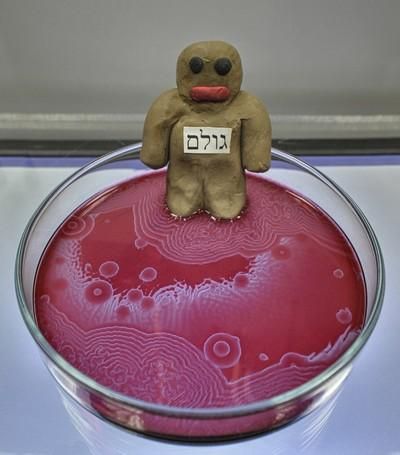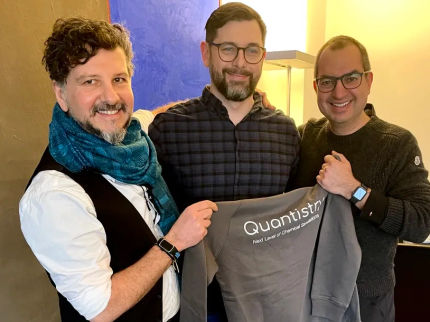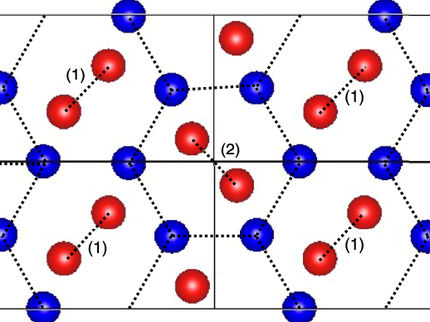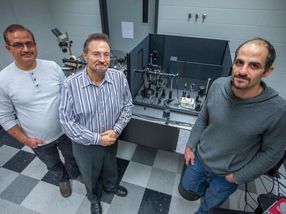Chemical microdroplet computers are easier to teach than to design
Scientists from the Institute of Physical Chemistry of the Polish Academy of Sciences in Warsaw in cooperation with the Institute of Physics of the PAS and the University of Jena have developed the concept of a simple chemical computer made of microdroplets capable of searching databases. computer simulations, carried out on databases of malignant tumours, have confirmed the validity of the adopted new design strategy, which opens the door to the popularisation of chemical methods of processing information.

These are different spatio-temporal structures that appear in chemical systems can be used for information coding and processing.
IPC PAS, Grzegorz Krzyzewski
Under the appropriate conditions, oscillating chemical reactions can occur inside a droplet. If there is more than one droplet and they are in contact with each other, the resulting chemical waves are able to penetrate into neighbouring droplets and disperse throughout the whole complex. This phenomenon is well-known, and attempts are being made to use it, among other things, for chemical data processing. Propagation of information throught many droplet system depends on their geometrical arrangement. Up to now, not much was known about how to design the shape of the microdroplet complexes for them to execute specific tasks. So, at the Institute of Physical Chemistry of the Polish Academy of Sciences (IPC PAS) in Warsaw, Poland, a novel strategy has been proposed. Instead of laboriously designing complex systems of microdroplets for a particular purpose, it is better to first produce a system, and then try to teach it something useful.
"We adopted a strategy that nature uses with great efficiency. Let's just look at ourselves. After all, our brains don't evolve to, for instance, recognise letters! First the brain comes into existence, and only then does it learn to read and write. Why not approach complex microdroplet systems in a similar manner, since we know that they also process information? Our proposal is therefore as follows: first let's make a system of interacting chemically microdroplets, and then let's check what it can learn to do," says Prof. Jerzy Górecki (IPC PAS).
Research on the chemical processing of information by microdroplet systems, funded by the Polish Ministry of Science and Higher Education, the Foundation for Polish Science and the European Union, was carried out using the Belousov-Zhabotinsky oscillating reaction. When the conditions of this reaction are suitably selected, a chemical front wandering in space appears. Oscillation reactions are common in living organisms. In humans, at the stage of embryonic development, they form the beginnings of the spinal vertebrae; in adults they are responsible, among others, for the contractions of heart muscle.
"In the Belousov-Zhabotinsky reaction the passing of a chemical front is accompanied by changes in ion concentrations leading to a change in the colour of the solution. When the reaction occurs inside the droplet, clear pulses radiating in all directions can be seen within it under the microscope. The bigger the drop, the more often it pulsates," explains PhD student Konrad Gizynski (IPC PAS).
Chemical pulses in complexes of adjoining droplets spread much like electrical stimulation in nerve fibres. Researchers from IPC PAS used pulse frequencies in individual drops to encode information: a high frequency corresponded to TRUE, a low frequency to FALSE. In order to control the pulses, and thus, among other things, to input data, the sensitivity of the reactions taking place in the droplets to blue light was used: in droplets illuminated by this the reactions die off completely.
Computer simulations were used to examine the calculating possibilities of a planar array of adjoining microdroplets arranged in a 5x5 square. Within the array droplets for inputting data and droplets for processing information were distinguished. Data was entered by simulating appropriately long exposure of the input droplets. Learning took place by the selective interruption of reactions taking place in the drops (in a real system the interruption would also be performed by light). Researchers took the droplet whose oscillations were the best match with the correct answer as the droplet giving the answer. The aim of the learning process was to select the light exposure time of all the droplets in the system in such a way as to obtain the highest number of correct answers for all the records in the database.
The simulated array of oscillating microdroplets classified tumours that were in the CANCER database. This database is composed of 699 records, of which 66% correspond to benign tumour cells. This means that on seeing the next entry if we randomly say "Don't worry, your tumour is not malignant" we have a 66% chance of giving the right answer.
"Our little chemical computer answered correctly in more than 90% of cases. This is a very good result and proves the effectiveness of the strategy we adopted. It is not completely unequivocal, but even the classic computer does not have to give the right response to cases outside the database. In any case, we humans also don't always make the right decisions," says Prof. Gorecki.
Microdroplet information processing systems can be built using microfluidic devices. These are usually small plates made of transparent plastic, in which a carrier liquid flows through a system of appropriately designed channels, carrying droplets of other liquids immiscible in the carrier. In such systems, it is relatively easy to produce drops of different sizes, substrate concentrations, or even substrates themselves.
"We are able, in a controlled and repeatable manner, to arrange the microdroplets in space, for example, enclosing many droplets of one liquid within a droplet of another liquid - and in such a way that the selected droplet always has the same neighbours. What is more, we also have techniques that allow us to influence the rate of chemical exchange through the membranes of the adjoining droplets," describes Prof. Piotr Garstecki (IPC PAS) and gives the example of an arrangement of nine microdroplets enclosed within another droplet, recently constructed at his laboratory.
Systems processing information chemically cannot replace consumer electronics - they are too slow. Their important advantages, however, include their capability of parallel processing of information, and the potential possibility of working in extreme environments, e.g. at significant pressures and/or high temperatures, which is where modern electronics fails. An interesting perspective is intelligent medicines, responding to many factors within the body and which are activated only under specific, strictly defined, circumstances. But chemical computers can offer even more: theoretically they could arise using the phenomenon of self-organization. This possibility lets us think about, among others, futuristic space probes, capable of independently building key components from materials available on other planets.


























































